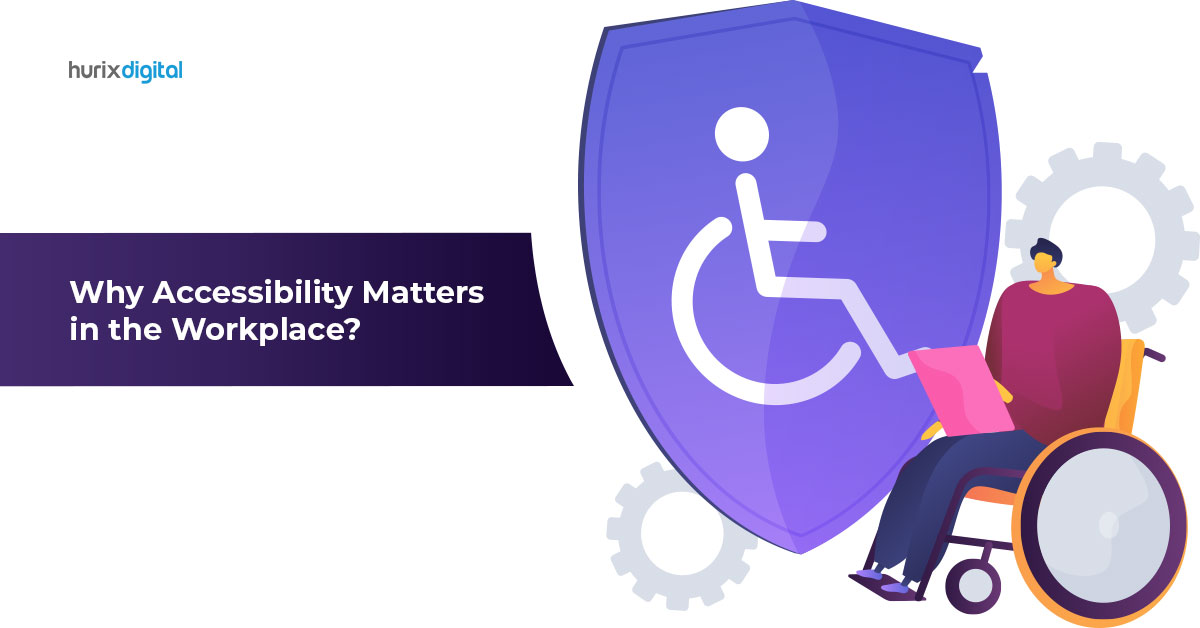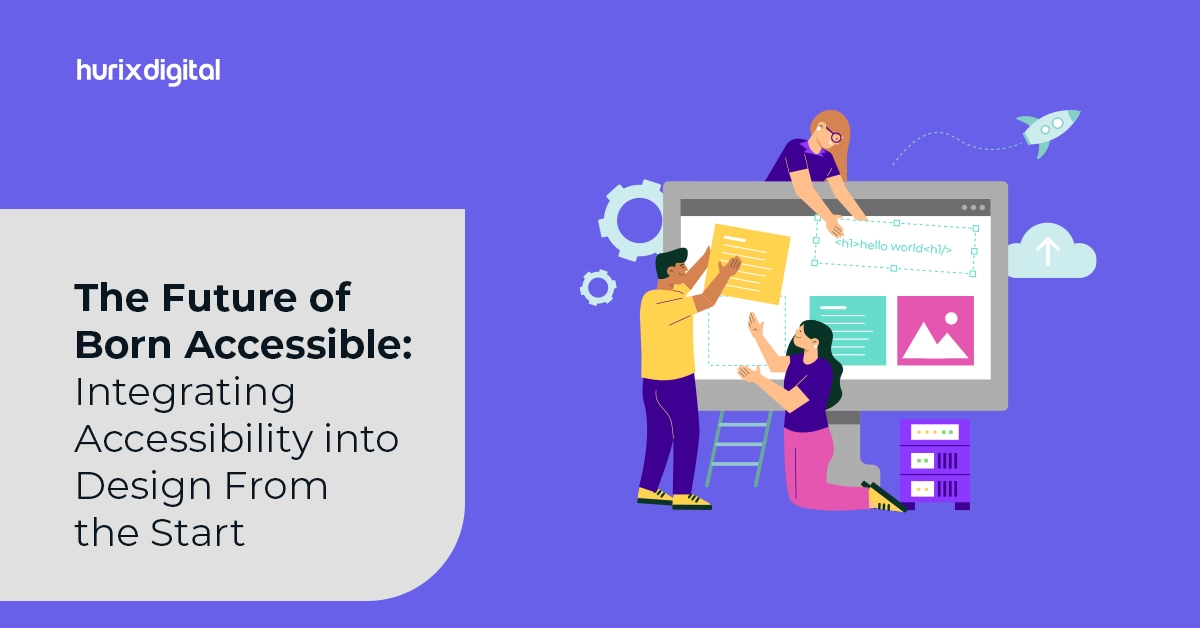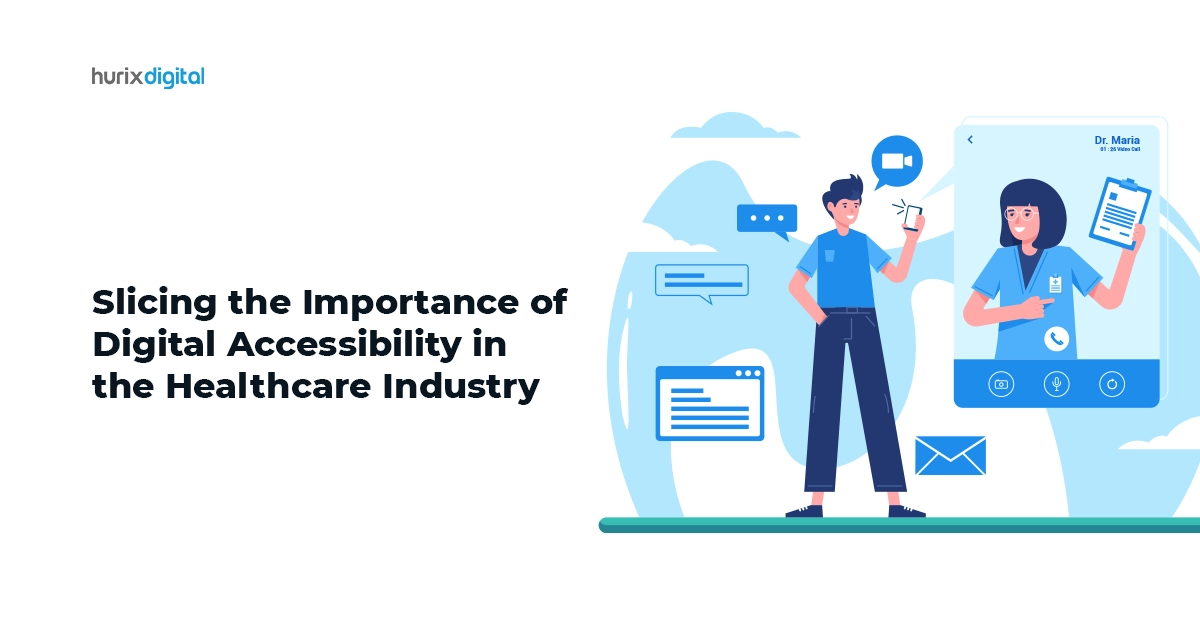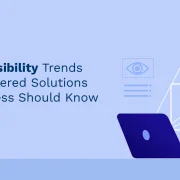
Why Accessibility Matters in the Workplace?
Summary
This blog talks abut inclusivity, diversity, and compliance with accessibility laws, ultimately leading to a more equitable and productive work environment.
Rita suffered a traumatic road accident that left her paralyzed from the waist down. After spending months in the hospital undergoing intense physiotherapy and treatment, she could finally return to her previous life. She resumed her job as a senior editor, which she is very passionate about and thoroughly enjoys.
However, now when she reaches her workplace, she has to wait 15-20 minutes every day at the door waiting for someone to let her in. Seated in a wheelchair, she finds it extremely difficult to reach the card reader at the gate. She tried talking to the IT office, asking them to allow digital tapping, but they haven’t done anything about it yet.
Do you think it’s fair that Rita has to waste 15 minutes every morning despite having informed the administration about her condition?
This is where accessibility matters and plays a very important role for people with disabilities. Nearly 1.3 billion people worldwide experience some kind of disability. Additionally, by 2050, the total number of disabled people is expected to double. Therefore, accessibility in the workplace needs to be an essential component in every organization.
Table of Contents:
- What is Accessibility?
- What is Digital Accessibility?
- Why is Workplace Accessibility Important?
- How to Ensure Physical Accessibility at the Workplace?
- How to Ensure Digital Accessibility at the Workplace?
- Closing Thoughts
What is Accessibility?
Accessibility can be understood as the practice of creating products, environments, services, etc., that can be conveniently used by people with disabilities.
It is important to keep in mind that accessibility should not only be associated with individuals having physical and cognitive disabilities but also with those who are pregnant, elderly, or temporarily injured.
What is Digital Accessibility?
Digital accessibility refers to designing and developing digital products, services, and content inclusively so that they can be conveniently used by people with disabilities.
The goal is to ensure people with disabilities can use digital platforms the same way people with no disabilities use them.
Examples of digital accessibility features are:
- Closed captions or transcriptions for videos to make them accessible to people who are deaf or hard of hearing.
- Alternative text descriptions for images to make them accessible to people who are blind or have low vision.
- Keyboard accessibility to make sure that people with mobility impairments can navigate digital content using a keyboard instead of a mouse.
- Color contrast to make digital content easier to read for people with visual impairments.
- Descriptive links and headings to make digital content easier to navigate for people with cognitive disabilities.
More digital accessibility features can be found under WCAG website compliance guidelines created by World Wide Web Consortium (W3C). WCAG, or web content accessibility guidelines, have been made to make web content more accessible to people with disabilities.
Also Read: Why Do You Need Digital Accessibility?
Why is Workplace Accessibility Important?
Workplace accessibility is significant because it ensures that people with disabilities have equal opportunities to participate in the work and contribute their skills and capacities to their workplaces.
Mentioned here are some reasons why accessibility should be the number one priority for each workplace.
1. Reduces Barrier to Employment
Often, people with disabilities find it difficult to get jobs or succeed in the workplace.
By ensuring accessibility and removing physical and digital accessibility barriers, employers can tap into a wider pool of talent and help individuals with disabilities achieve greater economic independence.
2. Promotes Inclusion and Diversity
By creating an accessible workplace, employers can attract and retain a diverse range of employees, including people with disabilities. This can bring new viewpoints and ideas to the workplace and upgrade overall performance.
3. Compliance with Legal Requirements
Many countries have laws and regulations that demand employers to provide reasonable accommodations for employees with disabilities. Failure to fulfill these requirements can result in legal penalties and damage to an employer’s reputation.
However, legal requirements should not be the driving force behind employers ensuring workplace accessibility. The objective should be to provide an inclusive workplace to people with disability so that they can fully participate in society.
How to Ensure Physical Accessibility at the Workplace?
Creating a physically accessible workplace involves taking a wide range of steps to ensure that the physical environment is designed to accommodate people with disabilities.
Here are some steps that can be followed to create a physically accessible workplace:
- Conduct an accessibility audit to identify all the potential barriers like limiting entrances/exits, inaccessible restrooms, uncomfortable workstations, etc.
- Provide accessible parking by ensuring the parking space is near the entrance/exit. A clear sign should be made at the place reserved for disabled people.
- Create comfortable and accessible workstations with adjustable desk height, ergonomic chairs, etc.
- Ensure accessibility in common rooms like meeting rooms, break rooms, leisure rooms, cafeteria, etc.
- Install assistive devices like a ramp, elevators, and automatic doors.
- Include accessibility in corporate training to teach other employees about it, including teaching them how to interact with people with disabilities.
Also Read: From Reactive to Proactive: Building a Culture of Accessibility in Your Organization
How to Ensure Digital Accessibility at the Workplace?
Creating a digitally accessible workplace involves taking various steps to ensure that digital products, services, and content are designed to accommodate people with disabilities.
Here are some steps that can be followed to create a digitally accessible workplace:
- Use accessible design principles while creating digital content, like using appropriate color contrast and clear and concise language and ensuring that content is easy to navigate.
- Use technology that is accessible to people with disabilities, such as screen readers and other assistive technologies.
- Follow the WCAG website compliance guidance and conduct regular website accessibility testing.
- Provide alternative text descriptions for non-text content like images and videos.
- Ensure that digital content can be navigated using a keyboard so employees who face problems using a mouse can still access the information.
- Use accessible document formats, such as PDFs with text-based information.
Closing Thoughts
If the above-mentioned points are kept in mind by all workplaces, then employees like Rita will face no difficulties doing their jobs. By ensuring physical and digital accessibility, employers can reach a wider audience, promote a culture of inclusion and accessibility, and create a more welcoming and inclusive workplace.
If you are looking for accessibility companies or website accessibility vendors, contact us at Hurix Digital. We excel in all accessibility solutions, and some of our most trusted customers are Ikea, Cambridge University Press, FedEx Express, Deloitte, etc.
Reach out to our expert team to get started.

Vice President – Content Transformation at HurixDigital, based in Chennai. With nearly 20 years in digital content, he leads large-scale transformation and accessibility initiatives. A frequent presenter (e.g., London Book Fair 2025), Gokulnath drives AI-powered publishing solutions and inclusive content strategies for global clients








